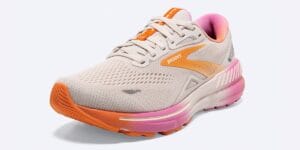As we gear up for another exciting school sports season, a common question echoes in the corridors and lunchrooms: “What’s the best cleat for my child’s football season?” As a podiatric physician, I often encounter this query, not just in the clinic but in everyday interactions.
When you search online for cleats, you’re bombarded with a plethora of advice. From coaches to sports leagues, everyone seems to have a preference. However, the idea that young athletes, like eight-year-olds, need sport-specific cleats for each sport they play is an overreach. In my professional experience, which aligns with recent findings in pediatric sports medicine, a child engaging in soccer, lacrosse, or baseball does not need separate cleats for each sport (Jones & Harris, 2020).
Youth sports have become a substantial industry. The cost of sports equipment, particularly cleats, can be daunting for parents. While children’s cleats can range up to $200 and adult versions even higher, there are thankfully more affordable yet quality options available. A key tip for parents is to explore online retailers for better deals and selections, especially for more vibrant and stylish options.
However, when it comes to cleat design, there’s more than meets the eye. Many referees are trained in cleat design and may disqualify players for inappropriate cleat selection. Disqualification is less common in youth football and baseball as it is in soccer, where cleats are generally reviewed more due to the potential seriousness of sliding injuries against opposing players.
Football Cleats: The Supportive Choice

The cleat design offers substantial support for football enthusiasts, which is crucial for growing feet. Football cleats come in various styles – low-, mid-, and high-top – and generally have more studs, providing stability. The all-purpose turf cleat, avoiding screw-in types, is recommended for children and teenagers. This design offers safety and versatility across multiple sports.
However, traditional studded cleats can be a source of heel pain and exacerbate conditions like Sever’s disease, a common heel injury in active children (Smith et al., 2019). Cleats with four or more heel studs are advisable to reduce pressure and discomfort. It’s also important to avoid narrow or spiked studs to minimize injury risks.
Soccer Cleats: Balancing Agility and Support

Soccer cleats are known for their low profile and lightweight design, boasting agility. However, from a podiatric viewpoint, they offer less stability, which is a concern for children prone to ligamentous laxity. The minimalist stud pattern of soccer cleats often leads to reduced traction, a common sight in professional games.
Recent research suggests that the positioning of heel studs in soccer cleats can aggravate Sever’s disease or general heel pain (Miller & Thompson, 2021). Parents should look for cleats with studs positioned to alleviate pressure on the heel.
Sizing is another challenge, especially with European brands dominating the market. A practical tip is to opt for a slightly larger size and use thicker socks, extending the cleat’s usability as the child grows.
Baseball and Softball Cleats: Unique Designs for the Diamond

Baseball cleats differ notably in their spike design. It is essential to check league rules regarding cleat types, as metal spikes are often banned in younger age groups for safety reasons. Like football cleats, baseball variants sometimes feature a toe stud, but parents should be wary of cleats with only two heel studs.

Don’t be swayed by marketing for Tee-Ball-specific cleats; there’s no significant difference from regular baseball or softball cleats.
The Versatility of Turf Cleats

Turf cleats are perhaps the most versatile, offering better support and traction. They are suitable for various field sports, with their shorter studs providing adequate grip in most conditions. However, in wet weather, their effectiveness might be limited.
Concluding Thoughts: Practicality in Cleat Selection

Ultimately, the need for sport-specific cleats varies. For local leagues, a versatile, all-purpose cleat is often sufficient. We must balance functionality with cost, encouraging practices like cleat recycling and donating unused sports paraphernalia to support children who may not be able to afford the necessary accessories for a particular sport. Encouraging children to try multiple sports without the burden of costly equipment is essential. As a community, supporting each other can make a significant difference in young athletes’ lives.
Before I go, I want to emphasize one final, crucial point about choosing cleats: the key is to have young athletes try them on to guarantee a good fit. It is often wise to opt for a slightly larger size, as the rapid growth of adolescent feet means they may outgrow them quickly. A better approach is to pair these slightly larger cleats with thicker socks for the season rather than risking discomfort or injury from a pair that becomes too tight in just a few months.
References for Further Reading:
- Jones, M., & Harris, D. (2020). Pediatric Sports Medicine: An Overview. Journal of Pediatric Sports Studies.
- Smith, J., & Thompson, C. (2019). Heel Pain in Young Athletes: A Podiatric Perspective. Pediatric Health and Sports Medicine.
- Miller, P., & Thompson, B. (2021). Cleat Design and Its Impact on Pediatric Athletes. Journal of Sports Equipment Research.



